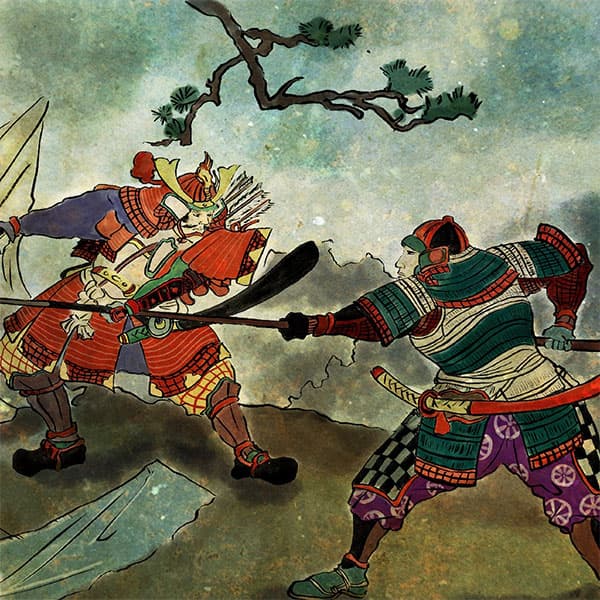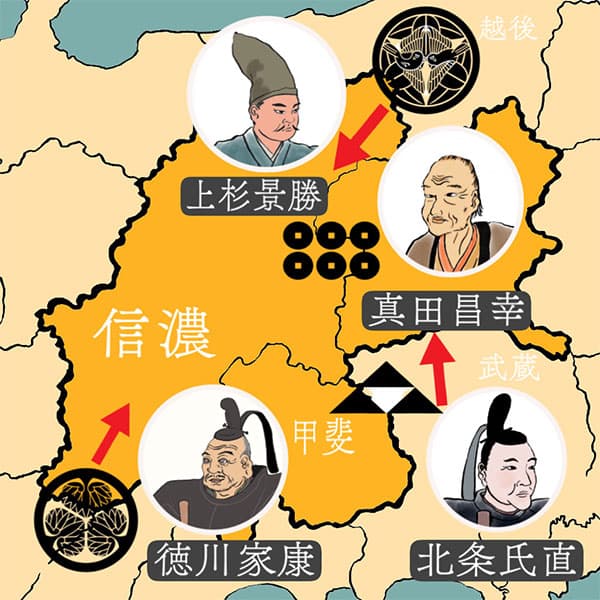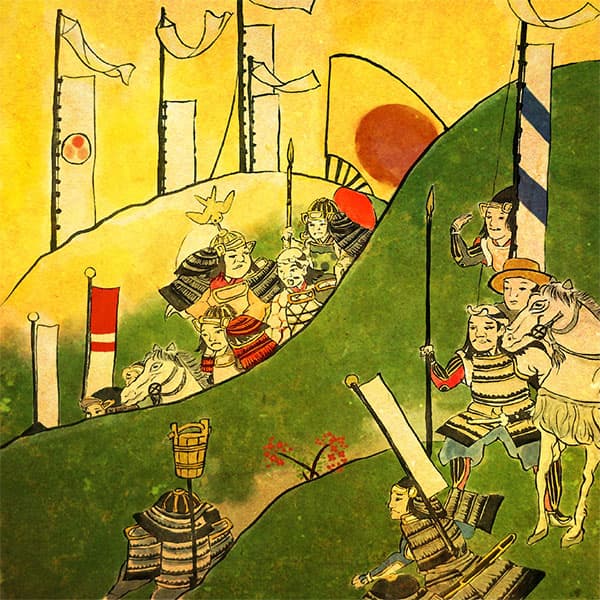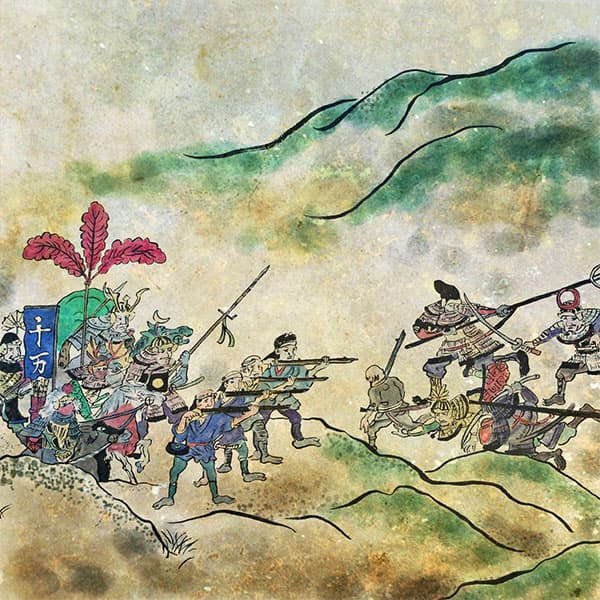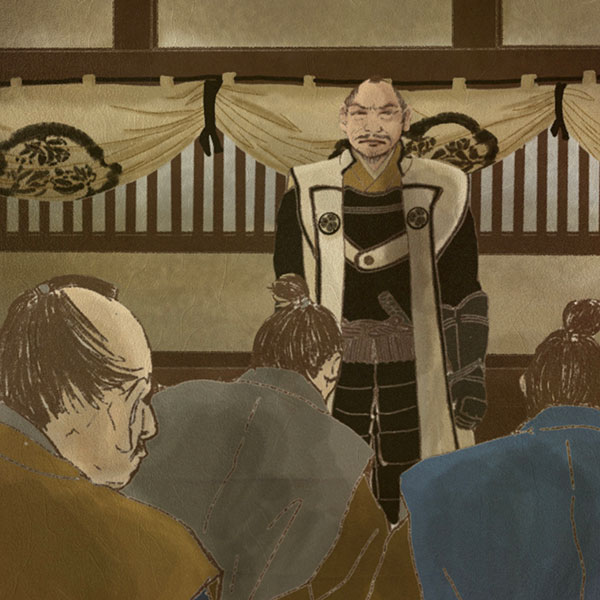Naomasa Ii (2/2)Ii's Red Demon
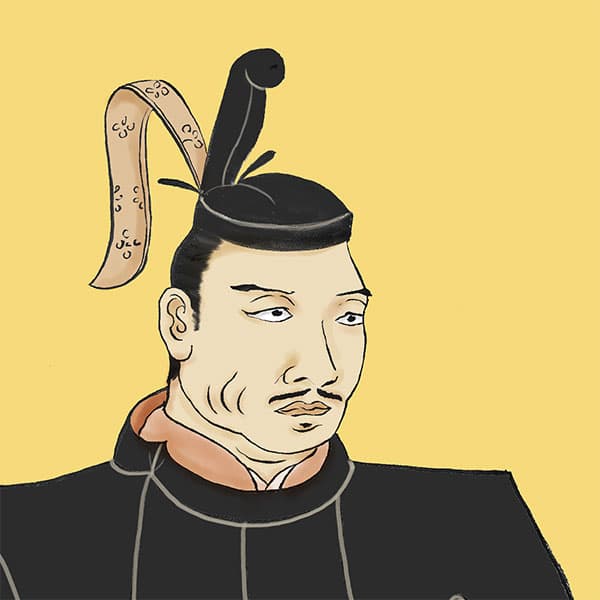
Naomasa Ii
- Article category
- biography
- name
- Ii Naomasa (1561-1602)
- place of birth
- Shizuoka Prefecture
- Related castles

Hikone Castle
National treasure tower
Takasaki Castle

Odawara Castle

Minowa Castle
- related incident
On the morning of the Battle of Sekigahara, Naomasa and Matsudaira Tadayoshi, Ieyasu's fourth son and son-in-law, led a gun troop and went on a reconnaissance mission. At this time, it was 8 o'clock in the morning, but the fog remained.
However, they fired guns at Ishida's camp on the other side of the fog.
The battle began with this gun. By mid-afternoon, the battle progressed in favor of the Tokugawa family.
The Ii family led by Ii Naomasa pursued the Shimazu family led by Yoshihiro Shimazu.
The Ii family killed Yoshihiro Shimazu's nephew, Toyohisa Shimazu, and then approached Yoshihiro Shimazu, but Naomasa was shot in the leg by Gendo Kashiwagi of the Shimazu family and fell from his horse.
However, the Tokugawa family came to dominate the country by winning the Battle of Sekigahara.
Hikone Castle and its demise
Despite being injured in the Battle of Sekigahara, Ii Naomasa was in charge of the aftermath of Sekigahara.
He disposed of and spared the lives of feudal lords who sided with Ishida Mitsunari, and for these accomplishments, he was given Ishida Mitsunari's fief from Takasaki, Ueno Province, and 180,000 koku in Sawayama, Omi Province (present-day Hikone City, Saga Prefecture), and was promoted to Junior Fourth Rank, Lower Rank. was ordained.
It is believed that Tokugawa Ieyasu transferred Ii Naomasa to Sawayama in order to protect Kyoto in the event of an emergency, or as a defense in case the feudal lords of western Japan rebelled.
However, in 1602, Ii Naomasa died while building Hikone Castle near Lake Biwa.
He passed away at the age of 42. After his body was cremated, Chosho-in Temple was built and enshrined there.
Ieyasu's eldest son, Naotaka Ii, was too sick to organize the Ii family's vassals, so he established an enclave in Ueno Province as a branch family, and Ieyasu established his second son, Naotaka Ii, as the lord of the domain.
From then on, the Ii family ruled the Hikone domain until the Meiji period.
Naomasa Ii and his connections
- Ii Naomasa statue and honoring ceremony in front of Hikone Station
- A bronze statue of Naomasa Ii stands at the rotary in front of JR Hikone Station.
After the Battle of Sekigahara, Naomasa moved from Takasaki Castle to present-day Hikone City and laid the foundation for the Hikone Clan. The Ii family ruled this area until the end of the Edo period.
In Hikone City, Shiga Prefecture, an event called the ``Ii Naomasa Honoring Ceremony'' is held at this location every fall to honor Naomasa for building the foundation of Hikone City. - Ii Shrine
- In 1842, Naosuke Ii, the 12th lord of the Hikone domain, created a statue of Ii Daimyojin from Iiya Hachimangu Shrine in Inasa District, Totomi Province (present-day Shizuoka Prefecture), and placed it on the approach to Ryutanji Temple as Ii Hachimangu Shrine. It is said to have started as a shrine to Ii Naomasa and his son Ii Naotaka.
It is now designated as a city-designated cultural property, but due to damage caused by weathering, it cannot be viewed. - Hikone Castle Cherry Blossom Festival
- Hikone Castle was ruled by the Ii family. Nowadays, it is a place of relaxation for citizens and tourists. The Hikone Castle Cherry Blossom Festival is held every April at Hikone Castle.
Approximately 1,200 cherry blossom trees bloom around the castle, and the cherry blossoms are illuminated at night during the festival. The castle used to be the center of control over the area, but today it is a popular place for citizens to relax. - Hikone Castle Festival
- The Ii family ruled Hikone for generations, continuing until the Meiji period.
To commemorate the birth of Naosuke Ii, the 13th lord of the Hikone domain, Hikone City's largest festival, the Little Edo Hikone Castle Festival, is held every fall.
A gorgeous historical picture scroll will be held around Hikone Castle, including the procession of Ii Naosuke, the child daimyo procession, Ii's red demon vassal procession, and the Hikone town firefighter procession.
Ii Naomasa and Takasaki Castle
In 1590, the Hojo family in the Kanto region was attacked by Toyotomi Hideyoshi and surrendered.
Tokugawa Ieyasu, who was participating in this battle, was ordered to transfer his territory from the Tokai region to the Kanto region.
Tokugawa Ieyasu, who entered the Kanto region, placed his subordinates in various parts of the Kanto region, and gave Ii Naomasa 120,000 koku from Gunma District, Ueno Province (present-day Takasaki City, Gunma Prefecture).
Minowa Castle already existed in Ueno Province, and Ii Naomasa entered the castle, but in 1597, by order of Ieyasu, Takasaki Castle was built as a flat castle. Furthermore, the castle town was moved from Minowa Castle to Takasaki Castle.
After the Battle of Sekigahara, Ii Naomasa was transferred to Hikone and the Suwa family moved in afterwards. From then on, the feudal lords of the feudal lords were frequently replaced, and the Meiji era began.
In the Meiji period, Takasaki Castle turned into a military facility, and the buildings that had been there were relocated or demolished.
Currently, the east gate, which is registered as an important cultural property of the city, has been relocated and restored. In addition, the earthworks and water moat of Sannomaru are still used in the current townscape.
The castle ruins have been maintained as Takasaki Castle Ruins Park and are a popular place for residents to relax.
Ii Naomasa and Hikone Castle
Due to his achievements at the Battle of Sekigahara, Naomasa Ii was assigned the northern part of Omi Province (present-day Shiga Prefecture), centering on Sawayama Castle, which was ruled by Ishida Mitsunari.
Naomasa initially moved to Sawayama Castle, but he disliked the fact that it was an old mountain castle and that it was the castle of Ishida Mitsunari, who was an enemy of the Tokugawa family, so he considered moving the castle.
However, Naomasa died in 1603 after his wounds from being shot at the Battle of Sekigahara could not heal.
Since Naomasa's son, Naotsugu Ii, was young, Naomasa's retainers consulted with him, and in carrying on Naomasa's wishes, he began construction of Hikone Castle facing Lake Biwa.
Tokugawa Ieyasu mobilized feudal lords from all over Japan to build this castle, and construction was completed by 1606. Throughout the Edo period, Hikone Castle served as the domain office of the Hikone clan and as a watchdog for the feudal lords of western Japan.
In the Meiji period, castles in various places were demolished due to the Castle Abandonment Ordinance, but Hikone Castle remained as a military facility.
Currently, the castle tower, turret, and Tamon Yagura are designated as national treasures, and the castle ruins are designated as a special historical site and as a Type 1 Special Area of Lake Biwa Quasi-National Park.
The castle tower has been designated as a national treasure, and is one of 12 castle towers in existence, and one of five castle towers designated as national treasures (Matsue Castle, Himeji Castle, Hikone Castle, Matsumoto Castle, and Inuyama Castle).
The castle grounds include the Founding of Japan Memorial Hall, Hikone Castle Museum, and the Genkyuen garden. Also, to entertain tourists, Hikone City's character ``Hikonyan'' appears inside the castle every day.
Himeji Castle and Hikone Castle are popular locations for historical dramas, as they are close to Kyoto, where many historical drama filming locations are located.
Reread Naomasa Ii's article
- related incident

- WriterTomoyo Hazuki(Writer)I have loved history and geography since my student days, and have enjoyed visiting historical sites, temples and shrines, and researching ancient documents. He is especially strong in medieval Japanese history and European history in world history, and has read a wide range of things, including primary sources and historical entertainment novels. There are so many favorite military commanders and castles that I can't name them, but I especially like Hisashi Matsunaga and Mitsuhide Akechi, and when it comes to castles, I like Hikone Castle and Fushimi Castle. Once you start talking about the lives of warlords and the history of castles, there's a side of you that can't stop talking about them.






